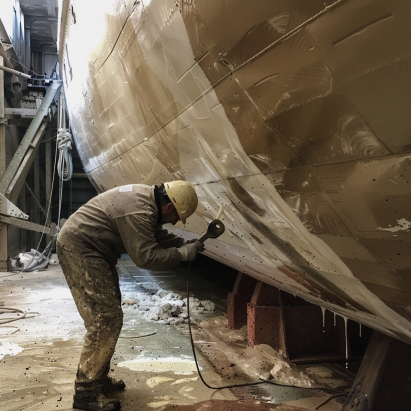Maintaining your boat’s bottom paint is crucial for ensuring its longevity and performance. The frequency and type of maintenance required can vary based on your boat’s location, the type of water it operates in, and the climate. Here’s a seasonal guide to bottom paint maintenance tailored to different climates and water types:
In spring, check for any signs of damage, such as peeling, blistering, or chipping. Look for marine growth, such as barnacles or algae, and remove them if necessary. If there are small areas with damage, sand them lightly and apply a fresh coat of bottom paint. If the bottom paint is significantly worn or damaged, consider applying a fresh coat of paint following the manufacturer’s instructions.
During the summer, clean the bottom of the boat regularly to prevent the buildup of marine growth. Use a soft brush or sponge and environmentally friendly cleaners to avoid damaging the paint. Also, check for any signs of wear or damage, especially after long periods of use.
In fall, if you’re in a colder climate, consider hauling out the boat before winter to protect it from freezing temperatures. Inspect the bottom paint for any signs of wear or damage that may have occurred during the summer months. If necessary, touch up any areas of the bottom paint that have been damaged or worn.
During winter, store the boat in a dry, protected area if possible, to prevent damage from freezing temperatures. If your boat is in the water during the winter, check the bottom paint periodically for any signs of damage or wear.
For different climates and water types, consider the following tips:
In warm water, marine growth tends to be more aggressive, so regular cleaning and inspection are essential. In colder climates, consider using a bottom paint that is specifically designed for cold water conditions. Saltwater can be more corrosive, so it’s important to choose a bottom paint that is suitable for saltwater use and to maintain it regularly. While freshwater is less corrosive than saltwater, it can still support marine growth, so regular cleaning and inspection are still necessary.
By following this seasonal guide and tailoring your maintenance routine to your boat’s location and the type of water it operates in, you can help ensure that your boat’s bottom paint remains effective and your vessel stays protected.

